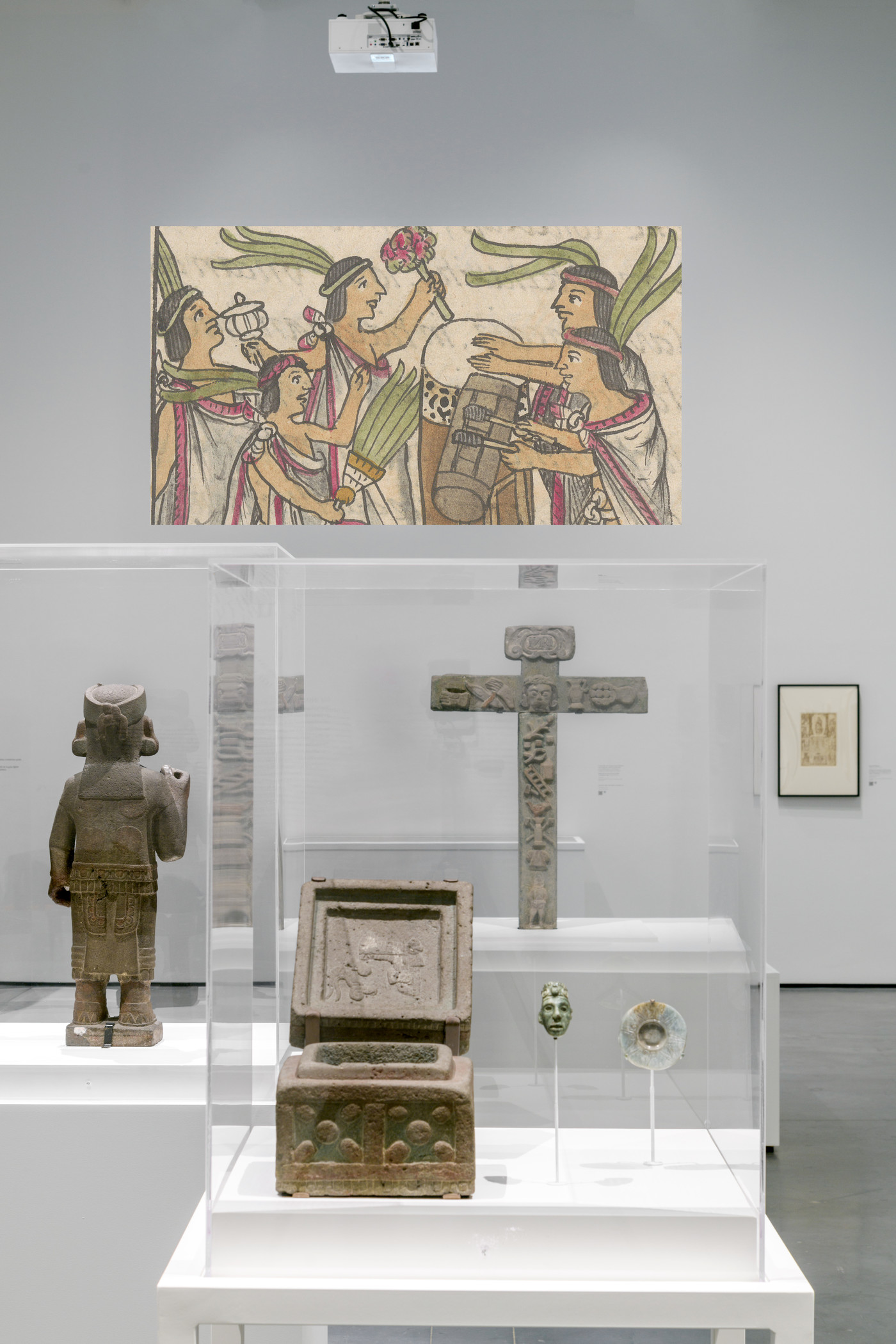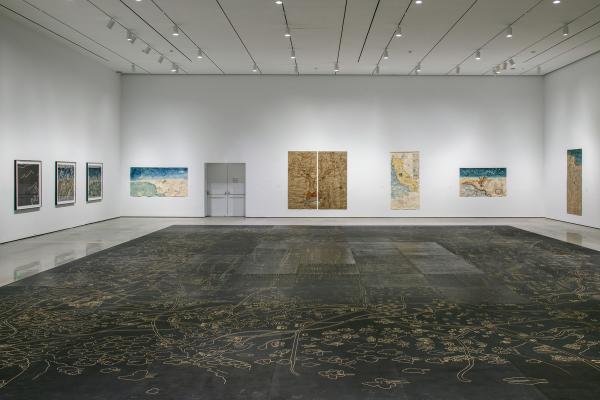Indigenous migrants have been a part of the history of Los Angeles since its founding in 1781. As part of a continued effort to uplift the humanity and the dignity of these communities, the Los Angeles County Board of Supervisors named December 2023 Indigenous Migrants Month in Los Angeles County. To mark the occasion, and to honor International Migrants Day on December 18, we’re resharing the Mixpantli podcast, which accompanied LACMA’s Mixpantli companion exhibitions in 2021–22.
To mark the 500th anniversary of the fall of the Aztec capital Tenochtitlan (modern-day Mexico City) in 2021, LACMA presented Mixpantli: Space, Time, and the Indigenous Origins of Mexico, which centered the creative resilience of Indigenous artists, mapmakers, and storytellers in the face of European colonization. Its companion exhibition Mixpantli: Contemporary Echoes showcased the lasting impact of this resilience, connecting the vibrant artistic traditions of the past and the present in Mexico and Los Angeles. Originally presented alongside these exhibitions, the Mixpantli podcast features LACMA curators and contemporary artists, activists, and scholars, who contemplate the legacies of these Indigenous knowledge-keepers in today’s Los Angeles.
“With the onset of the pandemic, it really forced us to think more explicitly about how this story that we're telling in the exhibition, how this history of colonialism, the effect that it had on Indigenous communities, how that story continues to this day,” says Alyce de Carteret, Assistant Curator, Art of the Ancient Americas at LACMA, who co-curated the exhibitions. “Indigenous communities, especially in Los Angeles, are continuing to be impacted by the same historical processes.”

The podcast also features Janet Martinez and Odilia Romero, co-founders of Comunidades Indígenas en Liderazgo (CIELO), an organization that works closely with migrant Indigenous communities in Los Angeles to fight for social and cultural justice.
“There's this narrative that we only live in museums, but people should know that we live outside the museums and we exist. We love, we laugh, we cry, just like everybody else,” says Romero.
Together with partners at UCLA, CIELO embarked on a project to make these communities visible through geospatial visualizations. The result is We Are Here (2021), an interactive map that charts the Indigenous languages spoken in Los Angeles. It acts as an important reminder that Indigenous peoples have always been a part of the region and that they remain here today, despite the continued erasure of Indigenous cultures and languages. (The Mixpantli exhibitions were presented in English and Spanish as well as Nahuatl, the language of the Aztecs, and Zapotec, the most widely spoken Indigenous language in Los Angeles.)
“This for me, is a map that represents Indigenous life, not only survival, but also reaffirming Indigenous peoples as modern people,” says Mariah Tso, artist and GIS Specialist, Ralph J. Bunche Center for African American Studies, UCLA, who worked on We Are Here. “That's what makes it really important, especially from a data standpoint, when you highlight and uplift small populations, because the general practice is to exclude it, which only perpetuates a lot of the colonial violence that we face every day.”
The podcast also features Alberto Diaz-Cayeros, Director, Center for Latin American Studies, Stanford University; artists Sandy Rodriguez and Mariana Castillo Deball, whose works were on view in Mixpantli: Contemporary Echoes; and Diana Magaloni, Deputy Director, Program Director, Dr. Virginia Fields Curator of the Art of the Ancient Americas, and Director of Conservation at LACMA, who co-curated the exhibitions. Listen below.



